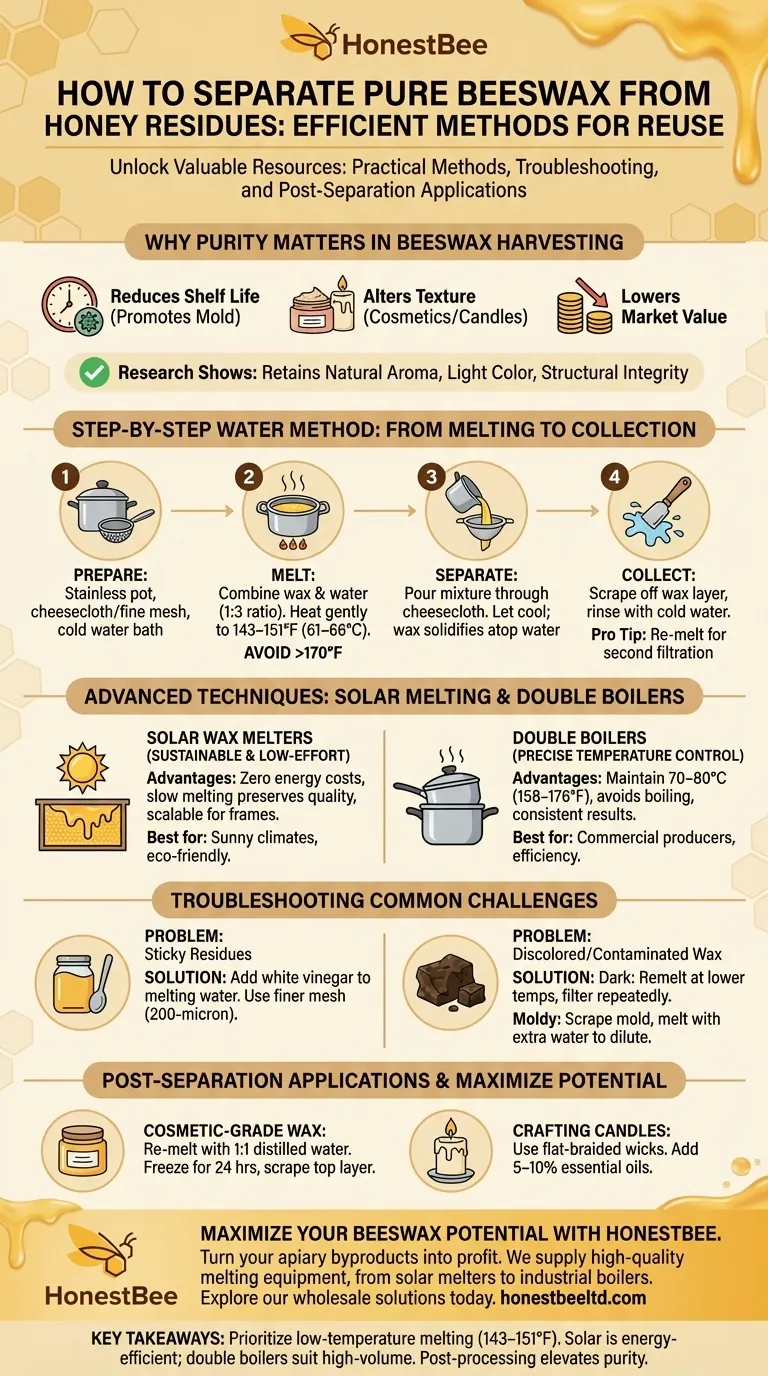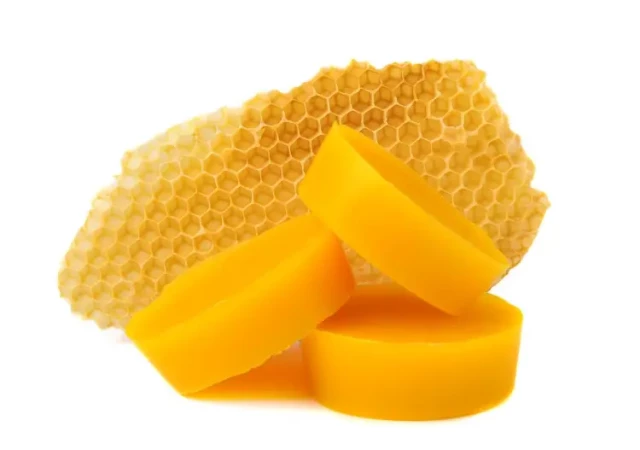For beekeepers and honey processors, extracting pure beeswax from honey residues isn’t just about waste reduction—it’s about unlocking a valuable resource. Whether you’re preparing cosmetic-grade wax or crafting candles, mastering separation techniques ensures maximum purity and yield. Here’s a detailed guide to practical methods, troubleshooting tips, and post-separation applications.
Beeswax Separation Essentials
Why Purity Matters in Beeswax Harvesting
Beeswax quality directly impacts its usability. Impurities like honey residues, propolis, or debris can:
- Reduce shelf life (promoting mold growth)
- Alter texture in cosmetics or candle-making
- Lower market value for commercial sales
Research shows that properly separated beeswax retains its natural aroma, light color, and structural integrity—key traits for premium products.
Step-by-Step Water Method: From Melting to Collection
The water method is ideal for small-scale operations and beginners.
-
Prepare Materials:
- Stainless steel pot or double boiler
- Cheesecloth or fine mesh strainer
- Cold water bath
-
Melting Process:
- Combine wax scraps with water in a 1:3 ratio (e.g., 1 cup wax to 3 cups water).
- Heat gently to 143–151°F (61–66°C)—exceeding 170°F (77°C) risks discoloration.
-
Separation and Collection:
- Pour the mixture through cheesecloth to filter debris.
- Let the liquid cool; beeswax solidifies atop the water.
- Scrape off the wax layer, then rinse with cold water to remove residual honey.
Pro Tip: Re-melt the collected wax for a second filtration if impurities persist.
Advanced Techniques: Solar Melting and Double Boilers
Solar Wax Melters
Solar melters are sustainable and low-effort:
-
Advantages:
- Zero energy costs; relies on sunlight.
- Slow melting preserves wax quality.
- Scalable for larger volumes (e.g., compatible with Langstroth or Top-Bar hive frames).
Best for: Beekeepers in sunny climates or those prioritizing eco-friendly methods.
Double Boilers
A double boiler (or bain-marie) offers precise temperature control:
- Maintain 70–80°C (158–176°F) to avoid boiling.
- Ideal for processing larger batches with consistent results.
Best for: Commercial producers needing efficiency.
Troubleshooting Common Challenges
Managing Residual Honey and Debris
- Problem: Sticky residues after separation.
-
Solution:
- Add a tablespoon of white vinegar to the melting water to break down sugars.
- Use a finer mesh (e.g., 200-micron filter) for secondary straining.
Salvaging Discolored or Contaminated Wax
- Dark Wax: Often results from overheating. Remelt at lower temps and filter repeatedly.
- Moldy Wax: Scrape off surface mold, then melt with extra water to dilute contaminants.
Post-Separation Applications
Cosmetic-Grade Wax Preparation
For lip balms or lotions:
- Re-melt purified wax with a 1:1 ratio of distilled water.
- Freeze for 24 hours, then scrape off the top layer—this removes microscopic impurities.
Crafting Candles with Recovered Beeswax
- Wick Selection: Use flat-braided wicks for cleaner burns.
- Additives: Enhance scent with 5–10% essential oils (e.g., lavender or citronella).
Maximize Your Beeswax Potential with HONESTBEE
Turn your apiary byproducts into profit. HONESTBEE supplies commercial beekeepers and distributors with high-quality melting equipment—from solar melters to industrial-grade boilers—ensuring efficient, pure wax extraction. Explore our wholesale solutions today to optimize your harvest.
Key Takeaways:
- Prioritize low-temperature melting (143–151°F) to preserve wax quality.
- Solar melters are energy-efficient; double boilers suit high-volume needs.
- Post-processing (e.g., freezing or vinegar rinses) elevates purity for premium products.
Visual Guide

Related Products
- Electric Beeswax Flat Sheet Machine with Operating Tray for Wax Processing
- Electric Flatting and Embossing Machine with Tray for Beekeeping
- Professional Thermostatic Conical Honey Melter
- Honey Concentrating Vacuum Heating Thickening Machine Dehumidifier for Honey
- High Quality Honey Dehumidifier Dryer Thickening Machine for Beekeeping
Related Articles
- How to Purify Beeswax Contaminated with Brood Comb: Maximizing Honey Recovery
- How to Transform Old Beeswax into Profitable and Sustainable Products
- How to Optimize Industrial Beeswax Melting: Key Parameters for Quality & Efficiency
- How to Make 100% Pure Beeswax Candles: A Healthier, Brighter Alternative
- How Beekeepers Turn Wax Cappings From Waste to Profit




















